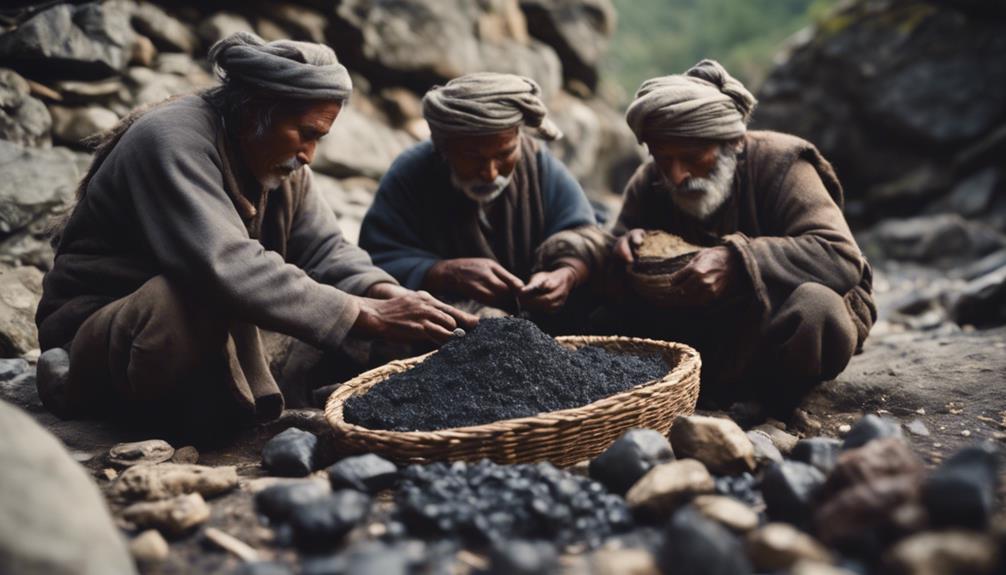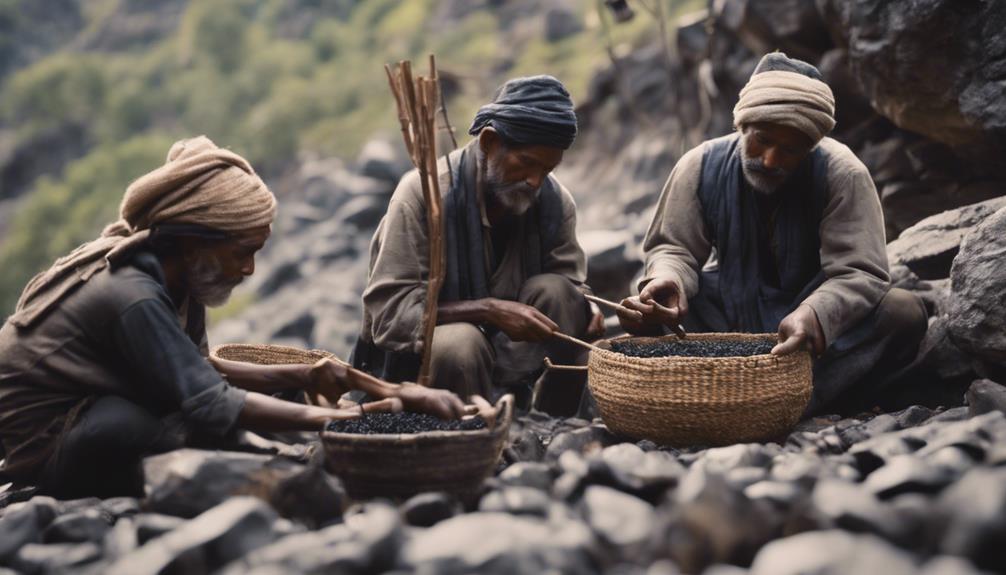Shilajit extraction blends ancient Himalayan traditions with sustainable methods. These practices honor historical significance while preserving delicate ecosystems. Techniques passed down through generations involve collecting resin from crevices to ensure purity. Sustainable harvesting techniques protect the region and maintain flora and fauna balance. Local communities play a crucial role, engaging in decision-making and receiving fair compensation. Rigorous quality control, including heavy metal analysis, ensures potency and safety. This fusion of tradition and sustainability in Shilajit extraction showcases a harmonious relationship between nature and culture, a fascinating journey worth exploring further.
Key Takeaways
- Traditional techniques preserve potent medicinal properties in Shilajit.
- Sustainable harvesting practices ensure long-term viability and minimize ecological impact.
- Local communities play a key role in fostering sustainable extraction practices.
- Quality control measures involve rigorous testing for purity and potency.
- Extraction process respects traditional knowledge, cultural practices, and ecological balance.
History of Shilajit Extraction

The historical origins of the extraction process of Shilajit can be traced back to ancient civilizations in the Himalayas. This natural substance holds great historical significance due to its use in traditional medicine and cultural practices.
For centuries, communities in the region have revered Shilajit for its perceived health benefits, leading to various extraction techniques developed over time to harness its potent properties.
Traditional Extraction Techniques
Dating back centuries, traditional extraction techniques for Shilajit have played a crucial role in preserving its potent medicinal properties. These traditional methods, passed down through generations, hold deep cultural significance.
The process involves collecting resin from rock crevices in the Himalayas and then purifying it to create the prized substance known for its health benefits. Embracing these traditional techniques not only honors history but also ensures the purity of the final product.
Sustainable Harvesting Practices

Implementing sustainable harvesting practices is essential for ensuring the long-term viability of Shilajit extraction and preserving the delicate ecosystem in which it thrives.
By minimizing the ecological impact through ethical sourcing, such practices aim to maintain the balance of flora and fauna in the region.
Ethical sourcing involves respecting the environment and local communities, ensuring that the extraction process does not harm the natural habitat or the people dependent on it.
Role of Local Communities
Collaboration with local communities is instrumental in fostering sustainable practices and mutual benefit within the realm of Shilajit extraction.
- Community Engagement: Involving local residents in decision-making processes.
- Ethical Sourcing: Ensuring fair compensation for local collectors.
- Skill Development: Providing training opportunities for community members.
- Cultural Preservation: Respecting and preserving traditional knowledge and practices.
Quality Control Measures

Ensuring the quality of extracted Shilajit involves rigorous testing procedures and adherence to established industry standards. Sample analysis plays a critical role in determining the purity and potency of the final product.
Various testing procedures, including heavy metal analysis and microbial testing, are conducted to ensure that the Shilajit meets the required quality criteria. These measures are essential in maintaining the efficacy and safety of the extracted Shilajit.
Frequently Asked Questions
How Long Does It Typically Take for Shilajit to Be Ready for Extraction After Being Harvested From the Mountains?
The extraction timeline for shilajit varies based on cultural practices and environmental factors. Typically, after being harvested from the mountains, it may take several weeks to months for the resin to be ready for extraction, ensuring quality and efficacy.
Are There Any Specific Rituals or Ceremonies Performed by Local Communities During the Extraction Process?
What cultural traditions and rituals are intertwined with the shilajit extraction process? Local communities often engage in ceremonies during the harvesting process, deeply rooted in centuries-old practices that honor the land and its resources.
Can Shilajit Extraction Have Any Negative Impacts on the Local Ecosystem or Wildlife?
Shilajit extraction, if not carefully managed, can have negative environmental impacts on the local ecosystem and wildlife. Sustainability practices, such as regulated harvesting and ecosystem protection measures, are essential for wildlife preservation and long-term environmental health.
Are There Any Regulations or Guidelines in Place to Ensure the Ethical Sourcing of Shilajit?
Ethical sourcing of shilajit is crucial for sustainability. Regulations and guidelines exist to ensure responsible harvesting practices. By adhering to these standards, companies can support local ecosystems and communities while preserving this valuable resource for future generations.
How Does the Taste of Traditionally Extracted Shilajit Differ From Commercially Produced Versions?
Traditionally extracted shilajit offers a unique taste profile, often deemed more robust and earthy compared to commercially produced variants. This distinction is attributed to distinct preparation methods, enhancing both the cultural significance and potential health benefits of this revered substance.
Conclusion
In conclusion, the traditional and sustainable methods of shilajit extraction have been passed down through generations, ensuring the preservation of this valuable natural resource.
By incorporating quality control measures and involving local communities in the harvesting process, the authenticity and purity of shilajit are maintained.
The history, techniques, and practices surrounding shilajit extraction highlight the importance of preserving traditional knowledge and sustainable practices for future generations to benefit from.





